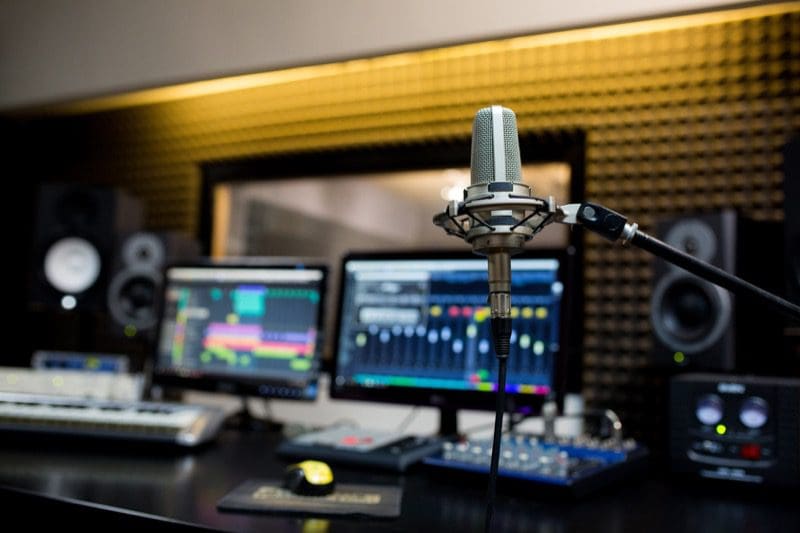 Understanding how to recreate music in our vehicles is a complicated science. Balancing speaker sizes and locations with the goal of recreating what the recording engineer heard in the mastering studio or, at the very least, making your system enjoyable isn’t always easy. We want to take a look at the physics behind sound and explain a few fundamentals of how sound works to help you understand the terminology used in the automotive audio industry and why a balanced system design with the proper equipment is crucial to creating an enjoyable and realistic listening experience.
Understanding how to recreate music in our vehicles is a complicated science. Balancing speaker sizes and locations with the goal of recreating what the recording engineer heard in the mastering studio or, at the very least, making your system enjoyable isn’t always easy. We want to take a look at the physics behind sound and explain a few fundamentals of how sound works to help you understand the terminology used in the automotive audio industry and why a balanced system design with the proper equipment is crucial to creating an enjoyable and realistic listening experience.
What is Sound and How Does It Work?
 At the most fundamental level, sounds are vibrations that travel through air and other mediums. These vibrations are detected by our ears, which in turn convert them to minute electrical signals that our brains interpret.
At the most fundamental level, sounds are vibrations that travel through air and other mediums. These vibrations are detected by our ears, which in turn convert them to minute electrical signals that our brains interpret.
Because we have two ears, our brain can determine the location of a sound source by analyzing the arrival time and frequency content of what each of our ears hear. For example, a sound that is created directly in front of you will arrive at both ears simultaneously and with equal frequency response. A sound that is created directly to the right of us will arrive at our right ear before our left. The amplitude of the sound will be slightly higher in the right than in the left. Also, the high-frequency content of the sound that arrives at our left ear will be different. We learn as we grow up to correlate different visual cues with what we hear to develop a sense for where the sound comes from.
Recreating Sound and Music
Much like the way signals from our auditory nerves send electrical messages to our brains, sound waves (or vibrations) can move a microphone diaphragm to create an electrical signal that a recording device can store for playback at another time. The image below is an electrical representation of someone saying the word hello. You can listen to the original audio file by clicking here.
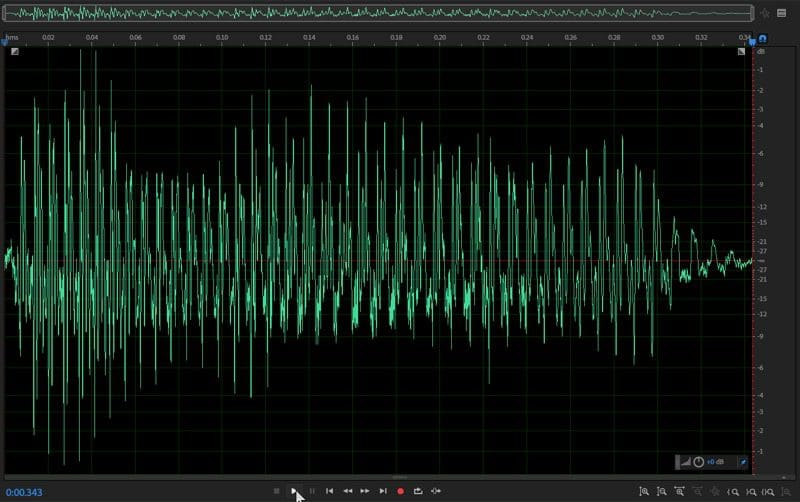
The image shows us a graph of voltage versus time, with voltage on the vertical scale and time on the horizontal. The amplitude (level) of the signal determines its intensity (or loudness). The speed at which the signal changes determines frequency. Understanding the interactions of simultaneous frequencies is fundamental to understanding why similar sound sources produce different sounds.
The graph below shows the average frequency content of the person saying hello. You can hear the audio file by clicking here
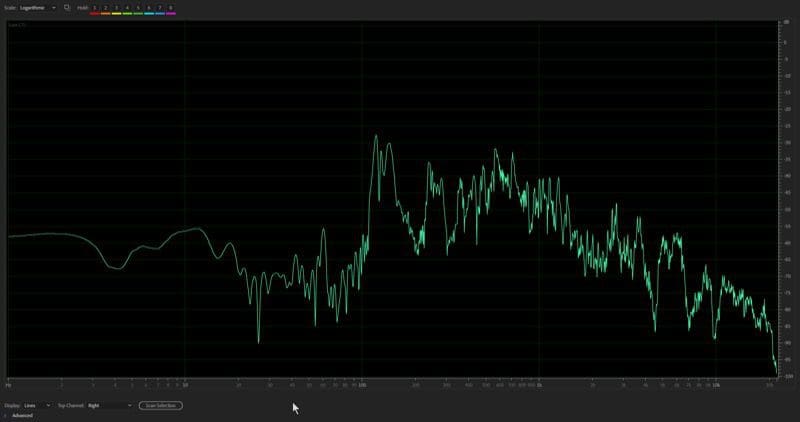
When a performer is singing or someone is playing an instrument, the sound of that instrument is determined by its harmonic content. For example, a Middle C on a piano and Middle C on a guitar are based around similar frequency content. The following recordings show the majority of energy at 261 and 522 Hz. Here is the Middle C note on the piano and here is the note on the guitar. You can see that the average harmonic content of each is quite different.
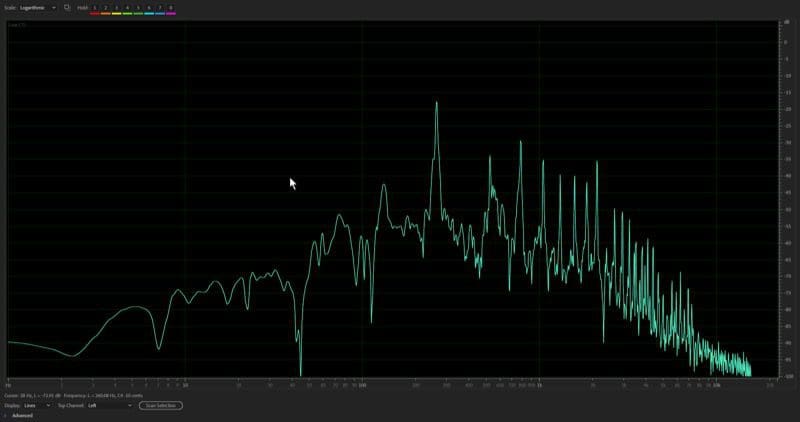
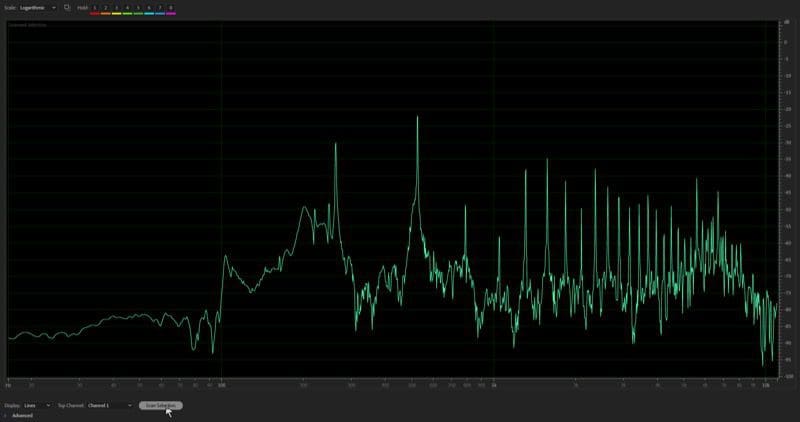
If we focus on just the main 261 and 522 tones with a steep band-pass filter set to 120 and 650 Hz, the two instruments start to sound very similar.
As you can hear, the “sound” of an instrument depends heavily on its harmonic content and relative balance (amplitude) of that information.
Car Stereo System Frequency Response
So, why are we dwelling so much on the fact that sound of different instruments and performers is based heavily on harmonic frequency content? When it comes to time to design an audio system for your car, truck, boat or motorcycle, it’s important that the system performs evenly across the entire audio spectrum in order for your music to sound realistic.
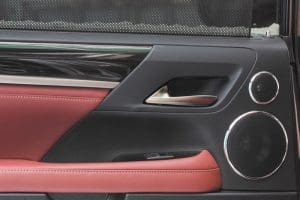 To achieve this goal, you need at least a two-way speaker system. Because no single speaker can reproduce the entire audio spectrum (from deep bass to the highest highs) with good efficiency and dispersion, we dedicate different size drivers to different frequency ranges. In the simplest of systems, you’d have woofers (not to be confused with subwoofers) that play frequencies below about 3,000 Hz. For the top end, you’ll need tweeters to cover the frequencies above 3,000 Hz.
To achieve this goal, you need at least a two-way speaker system. Because no single speaker can reproduce the entire audio spectrum (from deep bass to the highest highs) with good efficiency and dispersion, we dedicate different size drivers to different frequency ranges. In the simplest of systems, you’d have woofers (not to be confused with subwoofers) that play frequencies below about 3,000 Hz. For the top end, you’ll need tweeters to cover the frequencies above 3,000 Hz.
For even better performance, you may want to add a subwoofer to the system to relieve the woofer of the task of reproducing those frequencies below about 80 Hz and dedicate them to a larger speaker that is more efficient in that range. It also takes a lot of energy to reproduce bass information, so you’ll want a moderately powerful amplifier available to drive that subwoofer. If you have 25 watts of power available to drive your left and right speakers, 250 watts would be a good starting point for your subwoofer.
Creating an Amazing Mobile Audio System
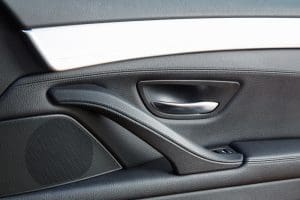 The last step in creating a car stereo system that sounds good is to ensure that the placement of each of the speakers in the vehicle allows for equal and balanced frequency response from both sides of the car. This is crucial to creating a realistic listening experience. With that said, most of us start with a set of coaxial or component speakers in the stock door locations. This puts our listening position quite far off-axis to the left side driver as compared to the right. For most people, the sound isn’t too bad and they can live with the minor differences, especially if the tweeters are angled up and rearward to deliver similar high-frequency response.
The last step in creating a car stereo system that sounds good is to ensure that the placement of each of the speakers in the vehicle allows for equal and balanced frequency response from both sides of the car. This is crucial to creating a realistic listening experience. With that said, most of us start with a set of coaxial or component speakers in the stock door locations. This puts our listening position quite far off-axis to the left side driver as compared to the right. For most people, the sound isn’t too bad and they can live with the minor differences, especially if the tweeters are angled up and rearward to deliver similar high-frequency response.
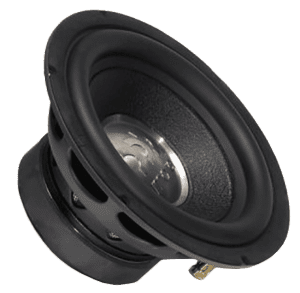 If you want a truly enjoyable and realistic listening environment, consider adding a digital signal processor that allows your installer to fine-tune the output of the left and right speakers at all frequencies so that they sound the same. If your installer knows how to sprinkle in the right amount of time delay so that the output of the right speaker arrives at your ears at the same time as the left, well, chances are you’ll enjoy an impressive soundstage in the vehicle. Your music will be spread evenly from left to right, and with the right recordings, you’ll be able to pick out each instrument or performer and their relative location to one another cross this soundstage.
If you want a truly enjoyable and realistic listening environment, consider adding a digital signal processor that allows your installer to fine-tune the output of the left and right speakers at all frequencies so that they sound the same. If your installer knows how to sprinkle in the right amount of time delay so that the output of the right speaker arrives at your ears at the same time as the left, well, chances are you’ll enjoy an impressive soundstage in the vehicle. Your music will be spread evenly from left to right, and with the right recordings, you’ll be able to pick out each instrument or performer and their relative location to one another cross this soundstage.
Experience Amazing Audio in Your Car Today!
Now that you have a basic understanding of how sound, works, it’s time to upgrade your car audio system. Drop by your local mobile enhancement retailer and ask about a subwoofer, a DSP-equipped amplifier and new speakers. The difference you’ll hear with each of these upgrades will blow your mind and put a smile on your face.
This article is written and produced by the team at www.BestCarAudio.com. Reproduction or use of any kind is prohibited without the express written permission of 1sixty8 media.
 We’ve written several articles about
We’ve written several articles about  Unfortunately, loudspeakers are notoriously inefficient. A high-efficiency 8-inch midrange driver used in a public address speaker can only transform about 1.3 percent of the power from the amp into acoustic energy. The remainder is converted to heat in the voice coil and, subsequently, the parts around the coil such as the magnet, T-yoke and cone.
Unfortunately, loudspeakers are notoriously inefficient. A high-efficiency 8-inch midrange driver used in a public address speaker can only transform about 1.3 percent of the power from the amp into acoustic energy. The remainder is converted to heat in the voice coil and, subsequently, the parts around the coil such as the magnet, T-yoke and cone.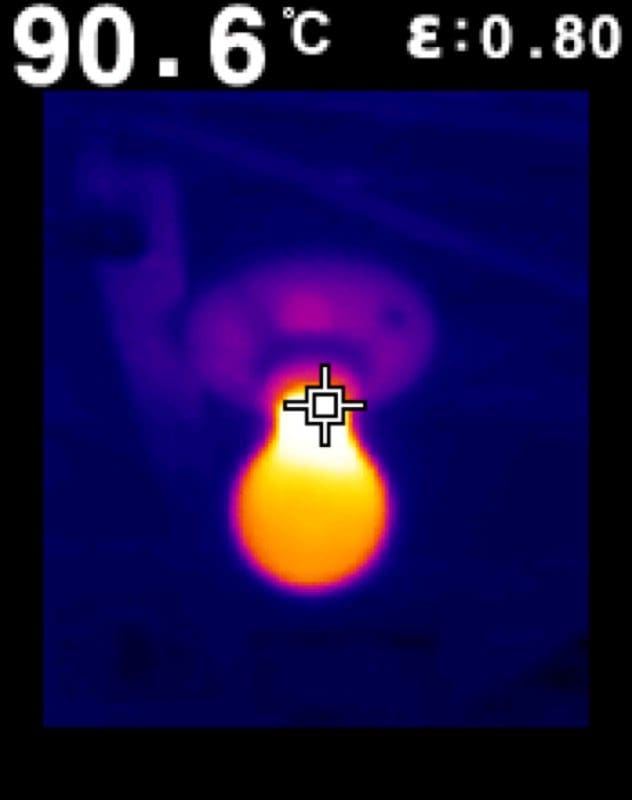
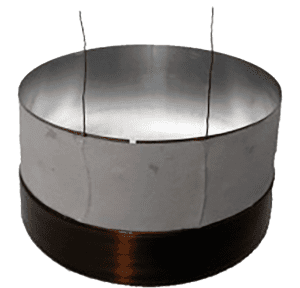 Heat in a
Heat in a  The ability of any device to handle heat is determined by its size. A 1/8-watt resistor is much smaller than a 1-watt resistor. Generally, the size of a component determines the amount of surface area and the ability to transfer heat into the air. In speakers, the diameter and length of the voice coil winding in a subwoofer are a good indicator of how much heat and, subsequently, how much power the speaker can handle.
The ability of any device to handle heat is determined by its size. A 1/8-watt resistor is much smaller than a 1-watt resistor. Generally, the size of a component determines the amount of surface area and the ability to transfer heat into the air. In speakers, the diameter and length of the voice coil winding in a subwoofer are a good indicator of how much heat and, subsequently, how much power the speaker can handle.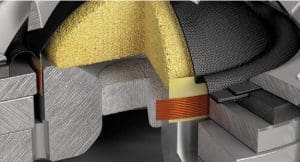 Now, let’s talk about tweeters. Tweeters in
Now, let’s talk about tweeters. Tweeters in 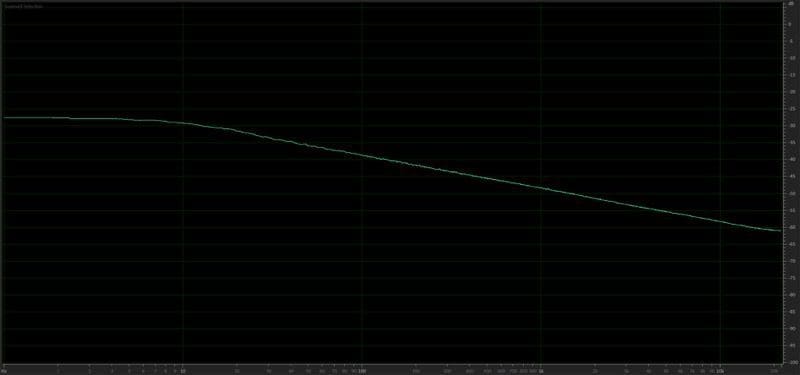
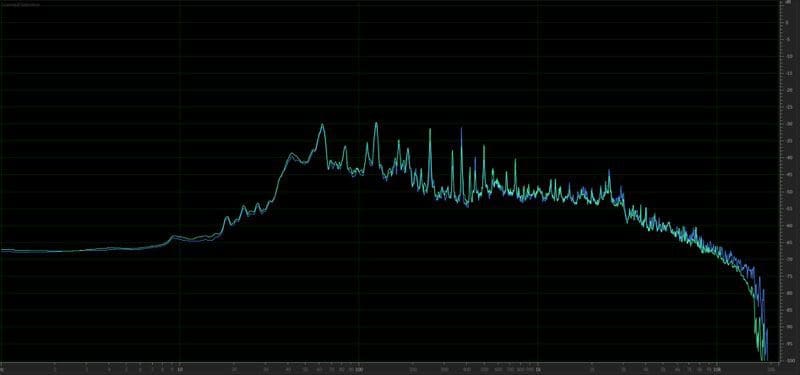
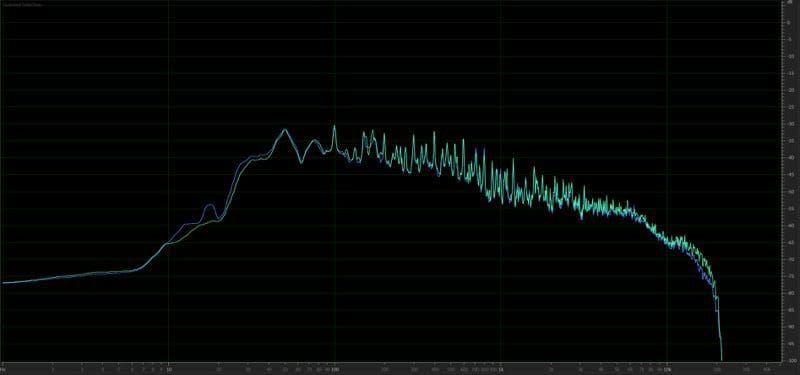
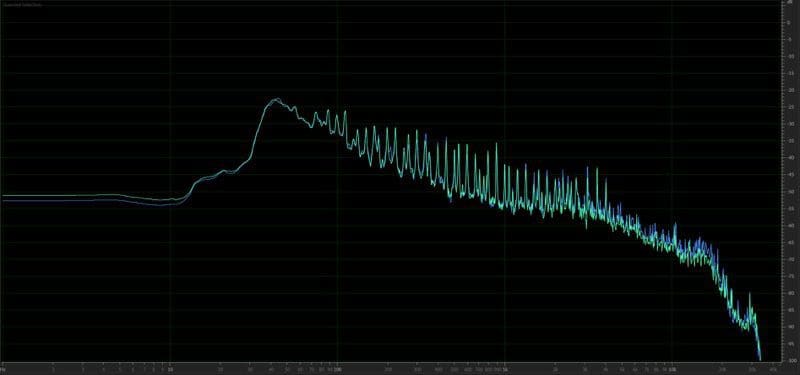
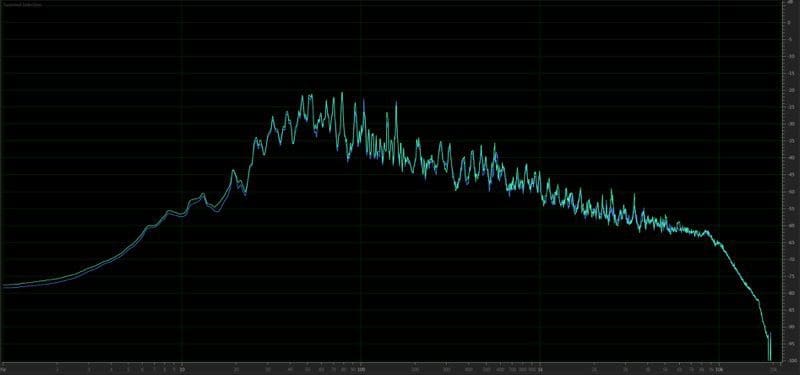
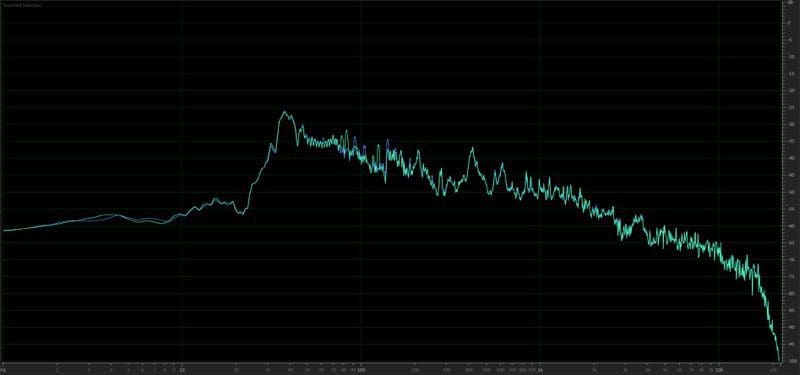
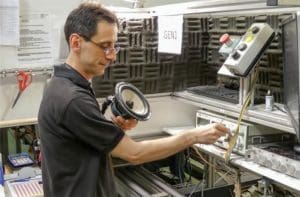 Depending on the brand, different companies use different processes to test the power handling capabilities of their speakers. It should be noted that some companies have detailed specifications for their testing procedures while others rely simply on data provided by their suppliers, and others guess based on the size of the voice coil used in the design. This is one of the key differences between companies that put significant effort into the design and development of their products and those that pick solutions from a catalog and have their name stamped on the basket and dust cap.
Depending on the brand, different companies use different processes to test the power handling capabilities of their speakers. It should be noted that some companies have detailed specifications for their testing procedures while others rely simply on data provided by their suppliers, and others guess based on the size of the voice coil used in the design. This is one of the key differences between companies that put significant effort into the design and development of their products and those that pick solutions from a catalog and have their name stamped on the basket and dust cap.
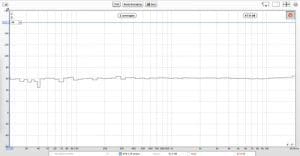

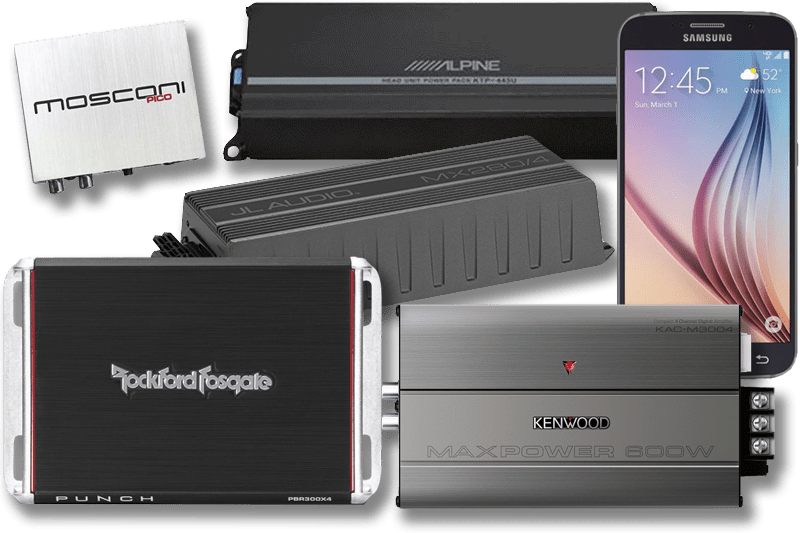 It’s hard not to notice that almost every reputable
It’s hard not to notice that almost every reputable  One of the first modern high-power compact amplifiers to make its mark in the industry was the Alpine Power Pack KTP-455U. Measuring roughly 8 by 2.5 by 1.5 inches in size, this four-channel amplifier could deliver a real-world 45 watts per channel into 4-ohm loads. Alpine marketed this amplifier as an easily integrated solution to upgrade a factory or aftermarket radio and deliver almost three times as much power to your speakers.
One of the first modern high-power compact amplifiers to make its mark in the industry was the Alpine Power Pack KTP-455U. Measuring roughly 8 by 2.5 by 1.5 inches in size, this four-channel amplifier could deliver a real-world 45 watts per channel into 4-ohm loads. Alpine marketed this amplifier as an easily integrated solution to upgrade a factory or aftermarket radio and deliver almost three times as much power to your speakers. A few years later, Rockford Fosgate introduced its Boosted Rail Technology series of
A few years later, Rockford Fosgate introduced its Boosted Rail Technology series of 

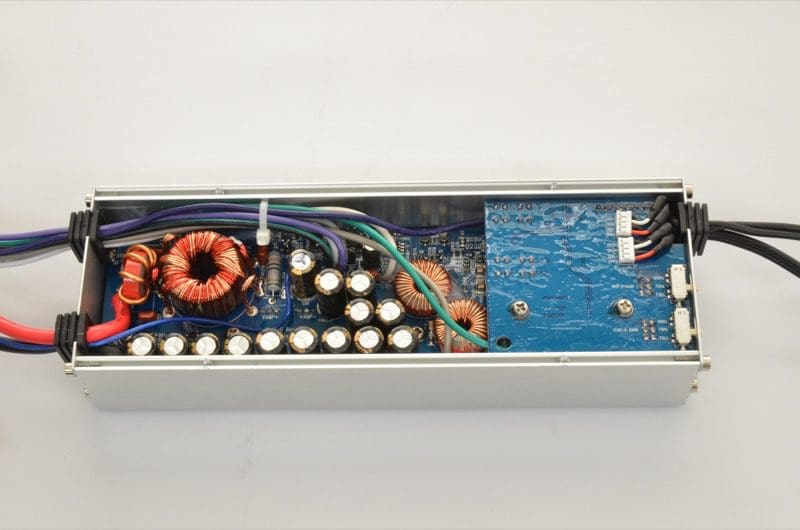
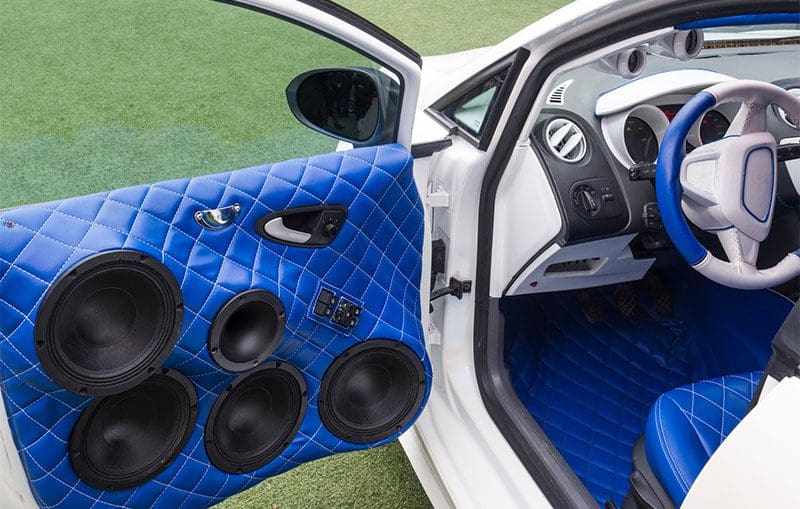 If you look at some amateur car audio forums and Facebook groups, you’ll see a disturbing trend of people using speakers that are intended for home applications in their cars. While these speakers initially seem to offer impressive performance for their price, they simply aren’t designed to withstand the challenges associated with a mobile audio system. In this article, we’ll delve into what makes a “real” car audio speaker the only choice for your next
If you look at some amateur car audio forums and Facebook groups, you’ll see a disturbing trend of people using speakers that are intended for home applications in their cars. While these speakers initially seem to offer impressive performance for their price, they simply aren’t designed to withstand the challenges associated with a mobile audio system. In this article, we’ll delve into what makes a “real” car audio speaker the only choice for your next 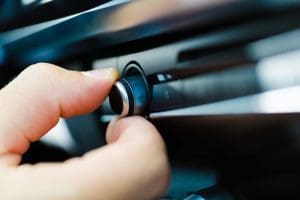 We’ll get into the environmental challenges of car audio systems shortly, but the biggest difference between listening to music in our cars or trucks and our homes is the volume level. If you are really into a song and decide to
We’ll get into the environmental challenges of car audio systems shortly, but the biggest difference between listening to music in our cars or trucks and our homes is the volume level. If you are really into a song and decide to 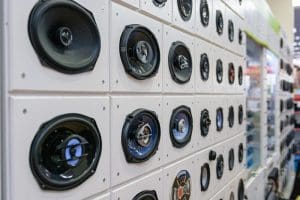 Marketing departments often take advantage of the topic of speaker power handling to inflate the perceived quality or value of a speaker. Printing a “peak power” number that is four or five times the continuous power handling number is functionally useless.
Marketing departments often take advantage of the topic of speaker power handling to inflate the perceived quality or value of a speaker. Printing a “peak power” number that is four or five times the continuous power handling number is functionally useless.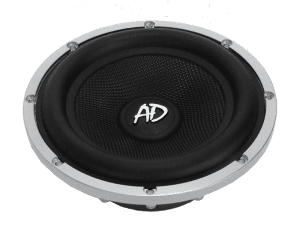 You can tell a lot about the knowledge and experience of a speaker designer by analyzing the specifications and features of an entire series of speakers. How one speaker is intended to work with the models that operate in adjacent frequency ranges is quite telling. For mid-range and mid-bass drivers, power handling is a significant consideration, but so is excursion capability. In terms of speaker specifications, the Xmax spec describes how far forward or backward a speaker can move linearly. If you double this value and multiply it by the effective cone area, you get the total volume of air a speaker can displace.
You can tell a lot about the knowledge and experience of a speaker designer by analyzing the specifications and features of an entire series of speakers. How one speaker is intended to work with the models that operate in adjacent frequency ranges is quite telling. For mid-range and mid-bass drivers, power handling is a significant consideration, but so is excursion capability. In terms of speaker specifications, the Xmax spec describes how far forward or backward a speaker can move linearly. If you double this value and multiply it by the effective cone area, you get the total volume of air a speaker can displace.
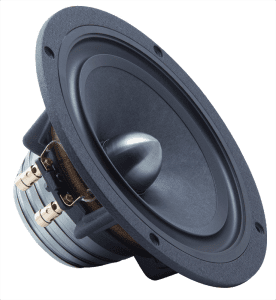 Face it: Speakers designed for car audio applications are essentially outdoors and exposed to ultraviolet radiation. You can imagine the importance of using designs and materials that can withstand UV in a
Face it: Speakers designed for car audio applications are essentially outdoors and exposed to ultraviolet radiation. You can imagine the importance of using designs and materials that can withstand UV in a 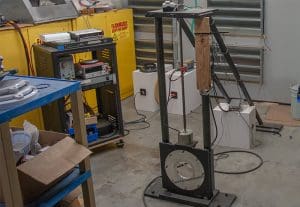
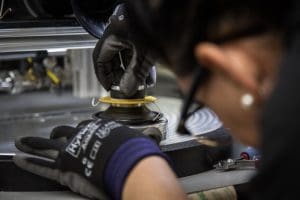 Next, choose speakers from reputable car audio brands that focus on engineering rather than marketing. If you don’t have time to do the research for yourself, ask your local mobile electronics specialist what makes the brand you are interested in better than its competitors. If they can’t provide an answer based on physical features and designs, it might be worth continuing your shopping. To be clear, “They sound great” or “Lots of competitors use them” aren’t valid answers. Oh, and don’t be fooled by “price marketing.” Just because one speaker is more expensive doesn’t mean it has more features and technologies that make it sound good, or that it has undergone proper design testing.
Next, choose speakers from reputable car audio brands that focus on engineering rather than marketing. If you don’t have time to do the research for yourself, ask your local mobile electronics specialist what makes the brand you are interested in better than its competitors. If they can’t provide an answer based on physical features and designs, it might be worth continuing your shopping. To be clear, “They sound great” or “Lots of competitors use them” aren’t valid answers. Oh, and don’t be fooled by “price marketing.” Just because one speaker is more expensive doesn’t mean it has more features and technologies that make it sound good, or that it has undergone proper design testing. Years ago, upgrading your car stereo meant buying a new radio that would play MP3 files or that included Bluetooth hands-free calling and audio streaming. As automobile manufacturers have increased their interest in providing advanced infotainment features, the aftermarket head unit industry has evolved away from conventional single- and double-DIN radios with segmented displays to multimedia receivers with color touchscreens. In this article, we’ll look at why upgrading your older car or truck with a touchscreen radio is a great way to add convenience and functionality to your commute.
Years ago, upgrading your car stereo meant buying a new radio that would play MP3 files or that included Bluetooth hands-free calling and audio streaming. As automobile manufacturers have increased their interest in providing advanced infotainment features, the aftermarket head unit industry has evolved away from conventional single- and double-DIN radios with segmented displays to multimedia receivers with color touchscreens. In this article, we’ll look at why upgrading your older car or truck with a touchscreen radio is a great way to add convenience and functionality to your commute.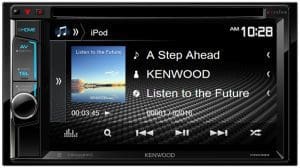 Of course, the biggest benefit of having a touchscreen radio is the amount of information that can be provided. If you are playing an MP3 or WAV file, the song title, artist and album name are easily visible on the screen of the radio. If you are stopped at a red light, searching through your collection of music is quick and easy. Of course, displaying contact information for incoming phone calls is another huge benefit.
Of course, the biggest benefit of having a touchscreen radio is the amount of information that can be provided. If you are playing an MP3 or WAV file, the song title, artist and album name are easily visible on the screen of the radio. If you are stopped at a red light, searching through your collection of music is quick and easy. Of course, displaying contact information for incoming phone calls is another huge benefit.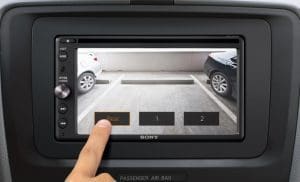 A huge benefit of most touchscreen radios is that you can add a backup camera that will allow you to see what’s behind your vehicle when parking. A backup camera makes maneuvering safer and much more efficient. Parallel parking is much simpler when you know just how close you can get to the vehicle behind you or the curb.
A huge benefit of most touchscreen radios is that you can add a backup camera that will allow you to see what’s behind your vehicle when parking. A backup camera makes maneuvering safer and much more efficient. Parallel parking is much simpler when you know just how close you can get to the vehicle behind you or the curb.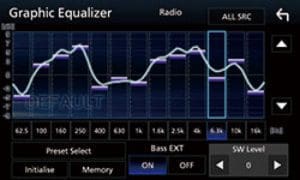 If you are like us, you enjoy fine-tuning your audio system to meet your listening preferences. Many touchscreen radios include multi-band graphic equalizers that will let you dial in the frequency response of your sound system for the music you enjoy. Some also include signal delay settings, crossovers and seating position options that allow your installer to create a realistic listening experience that mimics being at home in your living room or at the mixing console in a recording studio.
If you are like us, you enjoy fine-tuning your audio system to meet your listening preferences. Many touchscreen radios include multi-band graphic equalizers that will let you dial in the frequency response of your sound system for the music you enjoy. Some also include signal delay settings, crossovers and seating position options that allow your installer to create a realistic listening experience that mimics being at home in your living room or at the mixing console in a recording studio.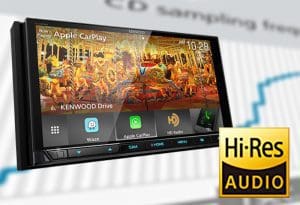 Even the most basic of touchscreen radios includes support for MP3 and WMA file playback from a USB memory stick. As you step up in features and cost, support for WAV, FLAC, AAC and DSD high-resolution audio files is added. Smartphone and iPod connectivity is another common feature with these radios. You can plug in your device and charge the battery while listening to your music collection as you drive. Many units will display album art right on the touchscreen.
Even the most basic of touchscreen radios includes support for MP3 and WMA file playback from a USB memory stick. As you step up in features and cost, support for WAV, FLAC, AAC and DSD high-resolution audio files is added. Smartphone and iPod connectivity is another common feature with these radios. You can plug in your device and charge the battery while listening to your music collection as you drive. Many units will display album art right on the touchscreen. Thanks to the iDatalink Maestro interface, mid- to high-end receivers can connect to factory infotainment systems like Ford Sync or Chrysler’s Uconnect. If you have a factory-installed backup camera or USB port, these can often be used with a new receiver. Parking sensors and vehicle configuration options for climate controls are additional commonly supported functions.
Thanks to the iDatalink Maestro interface, mid- to high-end receivers can connect to factory infotainment systems like Ford Sync or Chrysler’s Uconnect. If you have a factory-installed backup camera or USB port, these can often be used with a new receiver. Parking sensors and vehicle configuration options for climate controls are additional commonly supported functions.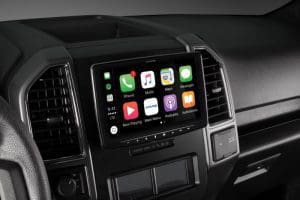 If you are looking for something a little fancier and truly beneficial, check out the options for adding Apple CarPlay and Android Auto to your car. These smartphone integration technologies make it safer and easier to make phone calls, listen to incoming text messages and dictate a response or choose the music you want to hear. You can even ask for turn-by-turn navigation directions to an address in your phone book or a business address searched on the Internet. The navigation directions consider real-time traffic flow information to create an efficient route.
If you are looking for something a little fancier and truly beneficial, check out the options for adding Apple CarPlay and Android Auto to your car. These smartphone integration technologies make it safer and easier to make phone calls, listen to incoming text messages and dictate a response or choose the music you want to hear. You can even ask for turn-by-turn navigation directions to an address in your phone book or a business address searched on the Internet. The navigation directions consider real-time traffic flow information to create an efficient route.